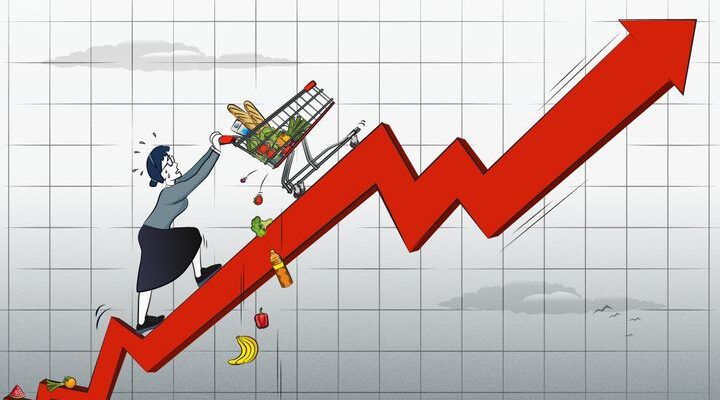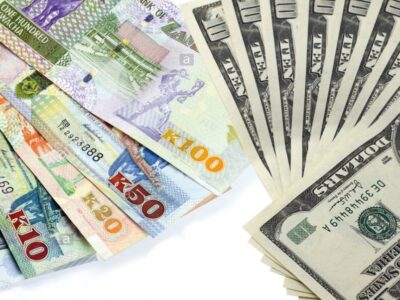Zambia’s annual inflation rate has surged to 13.5 percent in February 2024 due to price movements of selected food and non-food items.
This is as the country recorded K1.9 billion trade surplus.
Giving an overview of the country’s statistics, Zambia Statistical Agency (ZamStats) Statistician General, Mulenga Musepa, stated that the annual inflation for February, 2024 increased to 13.5 percent from 13.2 percent recorded in January, 2024.
This meant that on average, prices of goods and services increased by 13.5 percent between February 2023 and February, 2024.
Addressing journalists in Lusaka on Thursday, Musepa said that annual food inflation for February, 2024 was recorded at 14.1 percent compared to 13.7 percent the previous month.
This, he said, meant on average prices of food items increased by 14.1 percent between February, 2024 and February, 2024.
Musepa noted that the outturn was mainly attributed to increase in price movements of bread and cereals, vegetables (rape ,pumpkin leaves, sweet potato leaves (Kalembula)-With sterms, Lumanda, chinese cabbage, cassava leaves, cabbage, tomatoes, maize cobs); Food Products (table salt, vinegar, banking powder, baby cereal), milk and sugar.
He said annual non-food inflation for February 2024 was recorded at 12.7 percent compared to 12.4 percent the previous month.
This development was mainly attributed to increase in prices of purchase of fuel and lubricants, maintenance and repair of personal transport equipment, bus fare and taxi fare.
Musepa pointed out that of the overall 13.5 percent annual inflation, the food and non-alcoholic beverage group contributed 8.2 percentage points, while non-food group accounted for 5.3 percentage points.
“Of the 5.3 percentage points, transport contributed the highest at 2.2 percentage points followed by housing, water, electricity, gas and other fuels at 0.8 percentage points, furnishings, household equipment and routine household maintenance and clothing and footwear at 0.7 and 0.6 percentage points, respectively,” Musepa said.
He added that the rest of the non-food group accounted for the remaining 1.9 percentage points.
Musepa indicated that Lusaka province contributed the highest at 3.9 percentage points to the overall annual inflation of 13.5 percent in February 2024.
Copperbelt, he said, contributed 2.7 percentage points.
Musepa said Central and Southern provinces contributed 1.7 and 1.4 percentage points respectively, while North-western province had the lowest contribution of 0.5percentage points.
On trade, Musepa reported that total trade for month of January was K41.5 billion, while that of 2023 for the same period was K34.9 billion, representing a 18.9 percent increase.
“The total value of exports via all modes of transport for the month of January 2024 was K21.7 billion. Road transport accounted for highest value at K9.5 billion representing 43.6 percent share.
“Rail transport was second with a value of at K0.9 billion and air transport was third accounting for K0.5 billion, while other modes accounted for K10.9 billion,” he said.
The total value of imports via all modes of transport for the month of January 2024 was K19.8 billion.
Musepa said road transport was the highest at K10.0 billion representing 50.6 percent followed by air transport at K1.3 billion.
He added that rail transport was third at K0.1 billion accounting for 0.4 percent of the total import bill.
Other modes of transport, he noted accounted for K8.4 billion.
In terms of volumes, Musepa said a total of 601.8 thousand tonnes of imports were recorded for the month of January 2024, of which road transport accounted for 313.8 thousand tonnes, representing the highest share at 52.1 percent.
He said railway transport accounted for 14.7 thousand tonnes, representing a share of 2.4 percent in the period under review.
He added that Zambia recorded a trade surplus of K1.9 billion in January 2024 compared to a surplus of K0.7 billion in December 2023.
“Exports mainly comprising domestically produced goods, increased by 3.1 percent to K21.7 billion in January 2024 from K21.1 billion in December 2023,” Musepa noted.
This was mainly on account of 27.0, 23.3 and 111.4 percent increases in export earnings from raw materials, consumer goods and capital goods respectively.
He said imports decreased by 2.9 percent to K19.8 billion in January 2024 from K20.4 billion in December 2023, and that this was mainly as a result of 10.2 and 2.7 percent decrease in import bills of consumer goods and intermediate goods, respectively.
WARNING! All rights reserved. This material, and other digital content on this website, may not be reproduced, published, broadcast, rewritten or redistributed in whole or in part without prior express permission from ZAMBIA MONITOR.












Comments